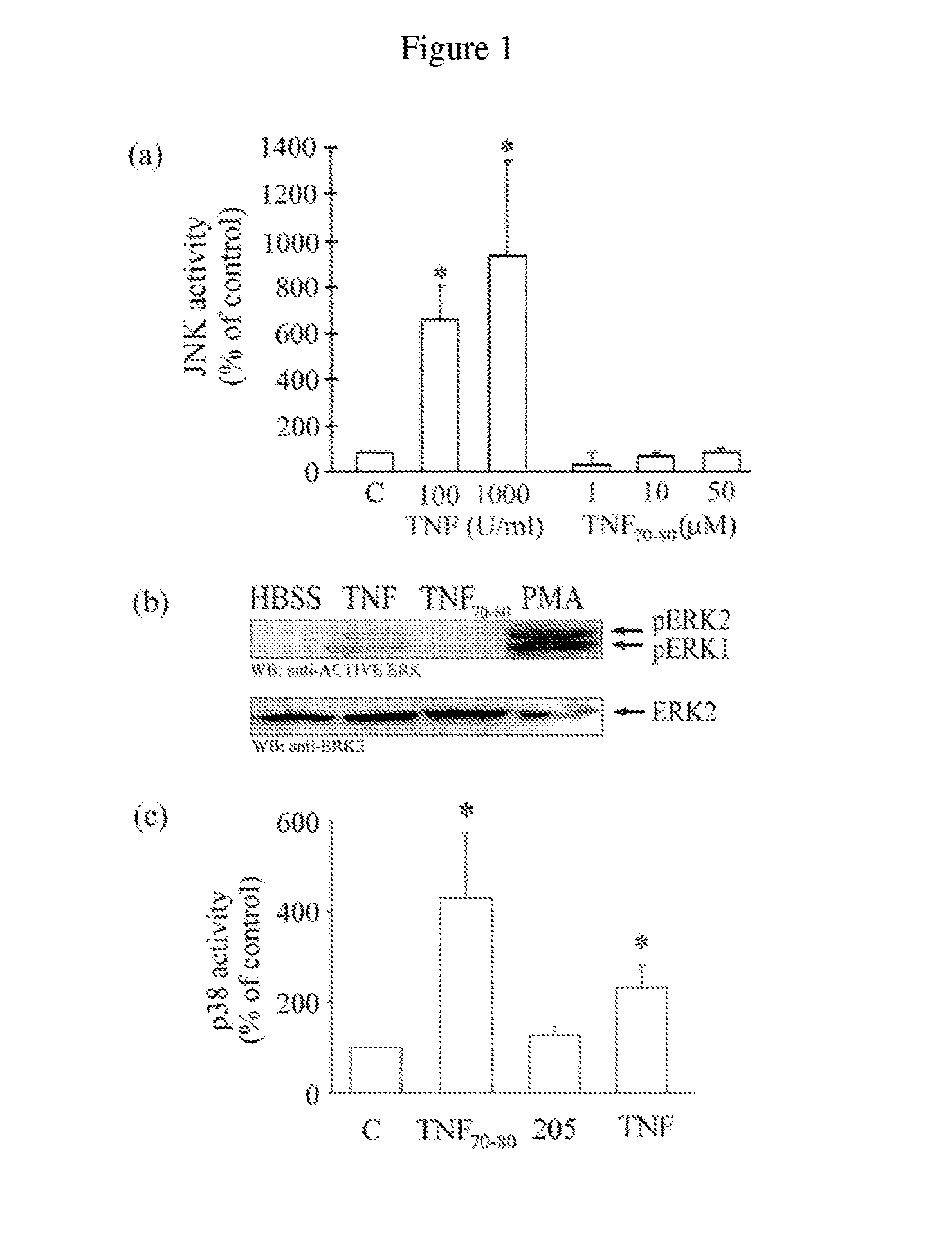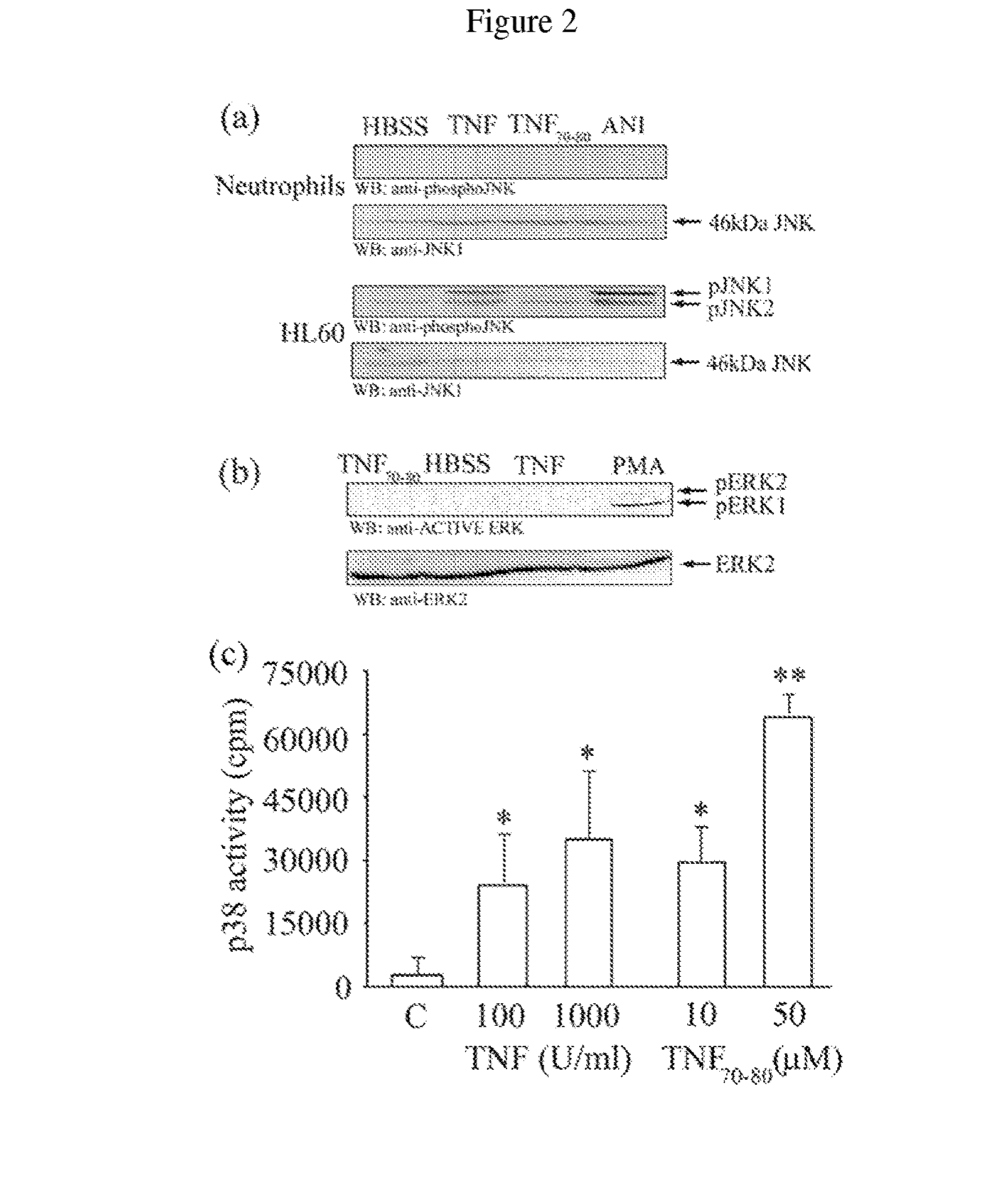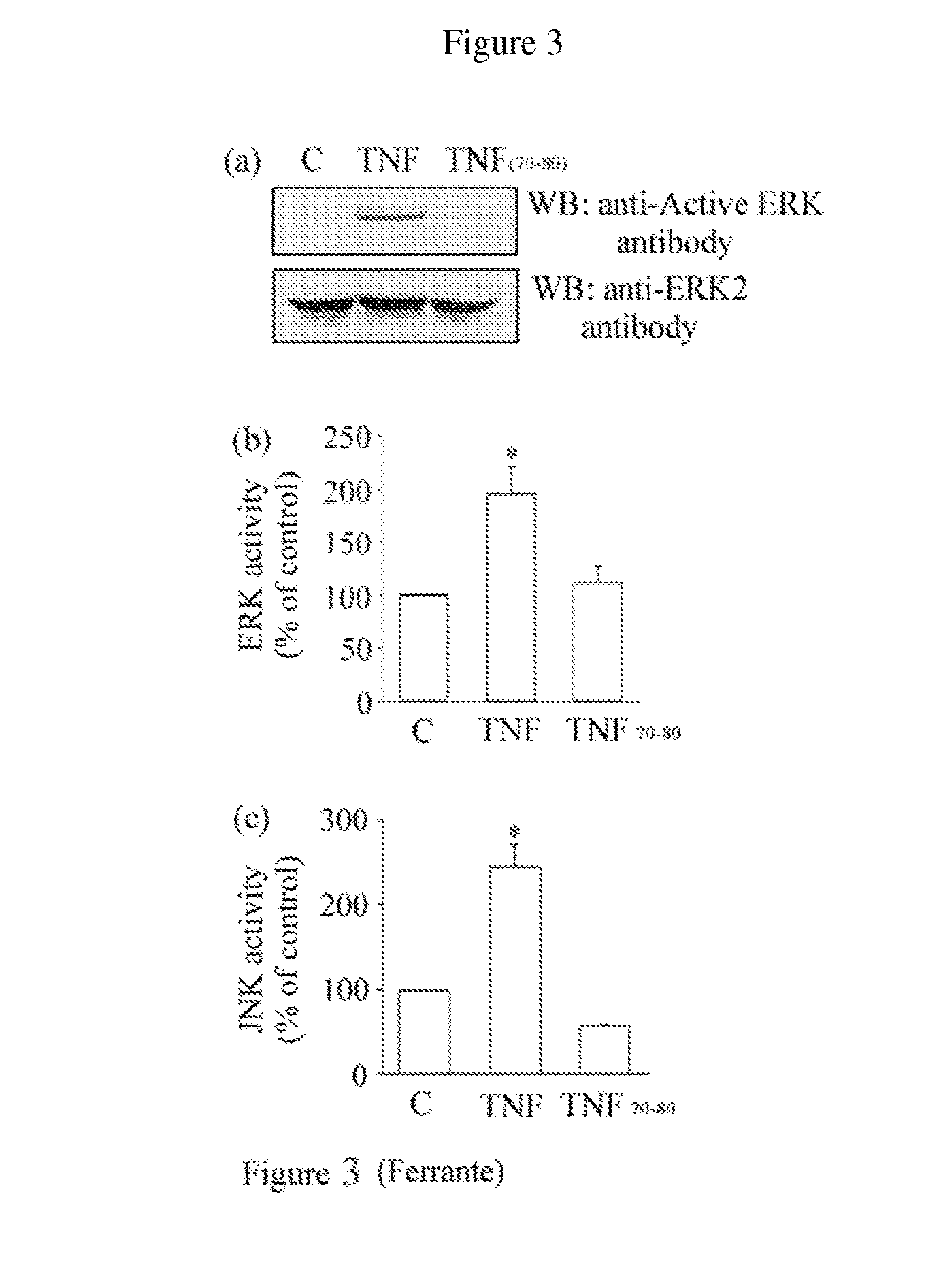Methods of identifying agents that selectively activate p38 and/or NFkB signaling
a technology of p38 and/or nfkb, applied in the field of selective modulation of signalling through cell receptors, can solve the problem that drugs do not have the capacity to selectively target one or more intracellular signalling pathways
- Summary
- Abstract
- Description
- Claims
- Application Information
AI Technical Summary
Benefits of technology
Problems solved by technology
Method used
Image
Examples
example 1
Materials
[0420]RPMI 1640, DMEM, PBS and HBSS were obtained from Cell Image, Women's and Children's Hospital, (Adelaide, South Australia). Gelatin and FCS were purchased from MultiSer, Biosciences Pty Ltd, Australia. Bis-N-methylacridinium nitrate (lucigenin), formyl-methionyl-leucyl-phenylalanine (fMLP), myelin basic protein, protein A-sepharose and general reagents for kinase assays were from Sigma Chemical Company, (St Louis, Mo.). γ-32P ATP (specific activity 4000 Ci / mmol) was obtained from Geneworks, (Adelaide, South Australia). Glutathione-sepharose was from Pharmacia Biotech, Sydney, Australia. Anti-p38 (C-20), anti-ERK2 (C-14), anti-KHS(C-20) (kinase homologous to SPS1 / STE20, also known as germinal center kinase related, GCKR), anti-ASK1 (apoptosis signal regulating kinase 1) anti-phospho-JNK and anti-NFkB p65 (C-20) antibodies were obtained from Santa Cruz Biotech, (California, USA). Anti-ACTIVE ERK antibody was purchased from Promega Corp (Madison, Wis.). Anti-human E-selec...
example 2
Cells
(i) Neutrophils
[0422]Neutrophils were prepared from peripheral blood of healthy donors by a rapid single-step technique (Kumaratilake, L. M., Rathjen, D. A., Mack, P., Widmer, F., Prasertsiriroj, V., and Ferrante, A. (1995) J. Clin. Invest. 95: 2315-2323) using Hypaque-Ficoll and according to the institution's guidelines on human ethics. The preparations of neutrophils were routinely of >99% viability and >98% purity. These were either used as cells in suspension or as adhered neutrophils by adding the cells to plasma coated plates as previously described (Powell, W., Gravel, S., Halwani, F., Hii, C. S., Huang, Z. H., Tan, A. M., and Ferrante, A. (1997) J. Immunol. 159: 2952-2959).
(ii) Endothelial Cells
[0423]Fresh human umbilical cords were obtained from consenting mothers according to the institution's guidelines on human ethics. Umbilical vein endothelial cells (HUVEC) were obtained by collagenase digestion and maintained in RPMI-1640 containing 20% human AB serum, 3.2 mmol / L...
example 3
Transfection of 70Z / 3 Cells with hTNFR1DNA
[0425]70Z / 3 cells, kindly provided by W. Langdon, University of Western Australia, Perth, Australia, are mouse pre-B lymphocytes which lack binding sites for human TNF and are non-responsive to the cytokine (Kruppa G. et al. (1992) J. Immunol. 148: 3152-3157). The cells were maintained in RPMI-1640 medium with 4.5 g / L glucose, 2 mM L-glutamine, 50 mM 2-mercaptoethanol and 10% FCS in an atmosphere of 95% air and 5% CO2. Cells were plated onto 10 cm plates at 4×107 cells in 15 ml culture medium. Before performing transient transfection, plasmid DNA (hTNFR1), kindly provided by Dr M. Kronke, Institute of Medical Microbiology and Hygiene, Medical Center University of Cologne, Koln, Germany (Adam, D., Wiegmann, K., Adam-Klages, S., Ruff A., and Kronke, M. (1996) J. Biol. Chem. 271: 14617-22), (20 μg in 1 ml of RPMI1640) was mixed with LipofectAMINE 2000 (Invitrogen) (60 μl in 1 ml of RPMI) and the mixture were left at room temperature for 20 min....
PUM
| Property | Measurement | Unit |
|---|---|---|
| concentrations | aaaaa | aaaaa |
| volume | aaaaa | aaaaa |
| volume | aaaaa | aaaaa |
Abstract
Description
Claims
Application Information
 Login to View More
Login to View More - R&D
- Intellectual Property
- Life Sciences
- Materials
- Tech Scout
- Unparalleled Data Quality
- Higher Quality Content
- 60% Fewer Hallucinations
Browse by: Latest US Patents, China's latest patents, Technical Efficacy Thesaurus, Application Domain, Technology Topic, Popular Technical Reports.
© 2025 PatSnap. All rights reserved.Legal|Privacy policy|Modern Slavery Act Transparency Statement|Sitemap|About US| Contact US: help@patsnap.com



